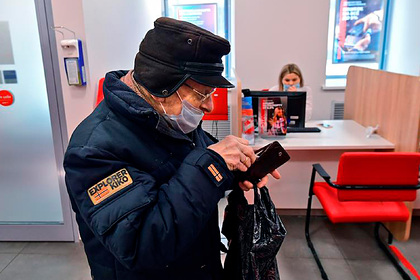Alpari analyst Bodrova linked the outlook for the weakening of the ruble with the indexation of pensions  the impact on the Russian currency may be oil quotes and the risks associated with a new strain of coronavirus. This is the conclusion reached by analysts interviewed by Lenta.ru. The announced indexation of pensions will require the allocation of more public funds.
the impact on the Russian currency may be oil quotes and the risks associated with a new strain of coronavirus. This is the conclusion reached by analysts interviewed by Lenta.ru. The announced indexation of pensions will require the allocation of more public funds.
If commodity prices remain in the range of $ 65-75 per barrel of Brent, then it will be necessary to look for money to fulfill the promises. The easiest way to do this is to slightly devalue the ruble. We need to be prepared for a certain weakening of the Russian currency in the next six to eight months
Alpari senior analyst Anna Bodrova
According to the law on the budget of the Russian Pension Fund, which, as TASS reported, was adopted by the State Duma at the end of November, the indexation of a fixed payment to an insurance pension next year will be 5.9 percent, and social pensions and state pensions – 7.7 percent. In addition, starting next year, the minimum wage (minimum wage) and the living wage will increase, which will require 30 billion rubles from the federal budget.
Foreigners are leaving
According to Anna Bodrova, the outflow of foreign investors' funds from the Russian public debt can also put pressure on the ruble exchange rate. Over the past week, foreign investors have reduced the volume of investments in federal loan bonds (OFZ) by one billion dollars, according to ING. The indicator became the worst since the beginning of April. When money leaves the debt market, non-residents invest in foreign currency instead, which also affects the ruble, Bodrova explained. According to the analyst, the OFZ sector is also sensitive to changes in global sentiment. The demand of foreign investors will recover with the calming down of the situation on the world markets, she believes.
73-76 rubles – the projected dollar exchange rate in the short term
The range of the dollar in the short term, according to Bodrova, will be from 73 to 76 rubles, the euro – from 82 to 86 rubles. In the future, the position of the ruble will depend on the situation on the oil market and the risks of a new strain of coronavirus. In addition, the geopolitical issue is still open, the expert notes.
Investment Director of Loko-Invest Investment Company Dmitry Polevoy, in turn, also considers a weakening of the national currency possible. He notes that the forecasts are complicated by the uncertainty surrounding the pandemic. “In such a situation it is difficult to make predictions even for a day ahead, with this strain everything is changing rapidly,” the specialist pointed out. As for the impact of the reduction in foreign investments in the Russian national debt, the current ruble exchange rate already reflects this pressure, he noted.
“Non-residents, until the position with a new strain becomes clear, may continue to reduce positions, those who wanted or wants to reduce them, ”Polevoy emphasized. At the same time, he added that high inflation rates affect the interest in the Russian national debt. To reverse the downward trend in investment in OFZs, this problem will need to be resolved, but for now it remains, he explained.
From the point of view of the ruble exchange rate, one should be prepared for increased volatility
Investment Director Loko-Invest Dmitry Polevoy
Russian President Vladimir Putin during the Russia Calling! Investment forum urged to make the national currency more stable by reducing the fluctuations in the ruble exchange rate. In parallel, the president allowed new budget spending on social benefits, Putin also recalled the lump sum payments that the state has already carried out as part of supporting citizens in the pandemic.